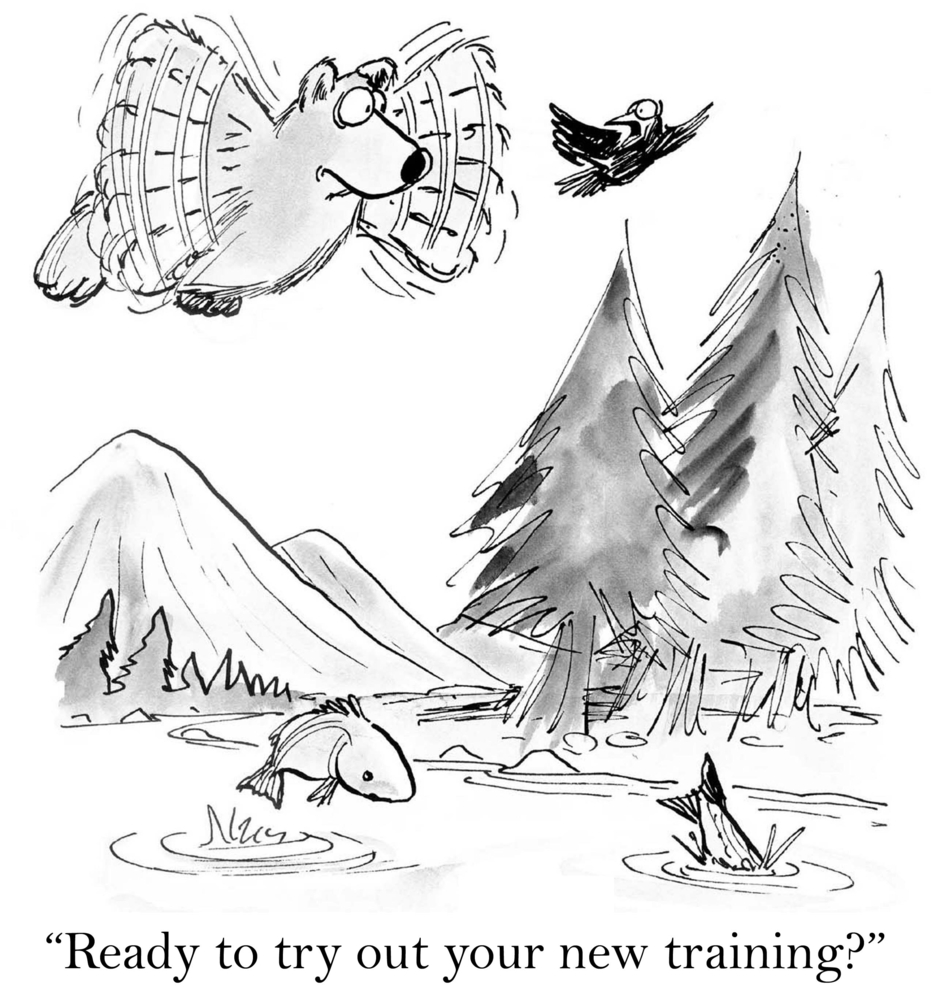What is Wrong with Corporate Training Today?
Unfortunately the above picture is worth a thousand words.
- Not only is the bear doing something it is not meant to do (how many of your employees are in the wrong roles?)
- But the bear is obviously panicked to try whatever skills it just learned in a recent training (how many training participants are not prepared or afraid to try their new skills back on-the-job?)
It Appears the Same is Wrong with Corporate Training
Too many instructional designers and training practitioners do not have a clear training strategy and do not take the steps necessary to accurately define:
- What training is needed
- Who should be trained
- Why the learning objectives matter to the participants, their bosses, and the business as a whole
- How to roll-out the training to get the desired results
The bird may have taught the bear a new behavior well, but the new skill is absolutely useless for the bear if the objective is to catch more fish.
Five Proven Steps to Improve Corporate Training
If you are in charge of learning and development at your company and understand what is wrong with corporate training today, you had better be sure that you:
- Business Objectives
Similar to creating a business case for change during a transformation, establish the specific business results you and the management team are looking for and why.
- Skills and Competencies
Determine if training is the answer and, if so, what critical few skills and competencies are required to consistently deliver those results in a way that makes sense for your unique corporate culture.
- Assessment
Conduct a meaningful training needs assessment so you know who needs the skills you have identified.
- Practice and Follow-through
Ensure there is follow-on practice, support, and coaching to ensure there is a transfer of training back on-the-job.
- Reinforcement
Create the processes and systems that encourage the desired behaviors including an ongoing training measurement system to keep everyone accountable and track progress.
The Bottom Line
Set the climate for learning before and after any training so you train the right people with the right skills to make the right difference. Otherwise, do not expect behavior or performance change.
To learn more about taking your corporate training to the next level, download the Top 5 Training Strategies and Key Mistakes to Avoid
